 Tucked away on a small road paralleling Kemil Beach on Lake Michigan is the Century of Progress Architectural District, which includes five houses originally built for the world’s fair in Chicago in 1933. The houses were moved by barge across the lake after the fair, and are now part of Indiana Dunes National Park.
Tucked away on a small road paralleling Kemil Beach on Lake Michigan is the Century of Progress Architectural District, which includes five houses originally built for the world’s fair in Chicago in 1933. The houses were moved by barge across the lake after the fair, and are now part of Indiana Dunes National Park.
More about that shortly. First, the view from Kemil Beach, which is nearly as far south as you can go and still be on the edge of Lake Michigan. The day we visited was clear and sunny, but not hot — more of a moderate September warmth.
 If you look carefully at the horizon at that place, the enormous buildings of the Chicago skyline are visible, but look as insubstantial as grey chalk marks on a watercolor.
If you look carefully at the horizon at that place, the enormous buildings of the Chicago skyline are visible, but look as insubstantial as grey chalk marks on a watercolor.
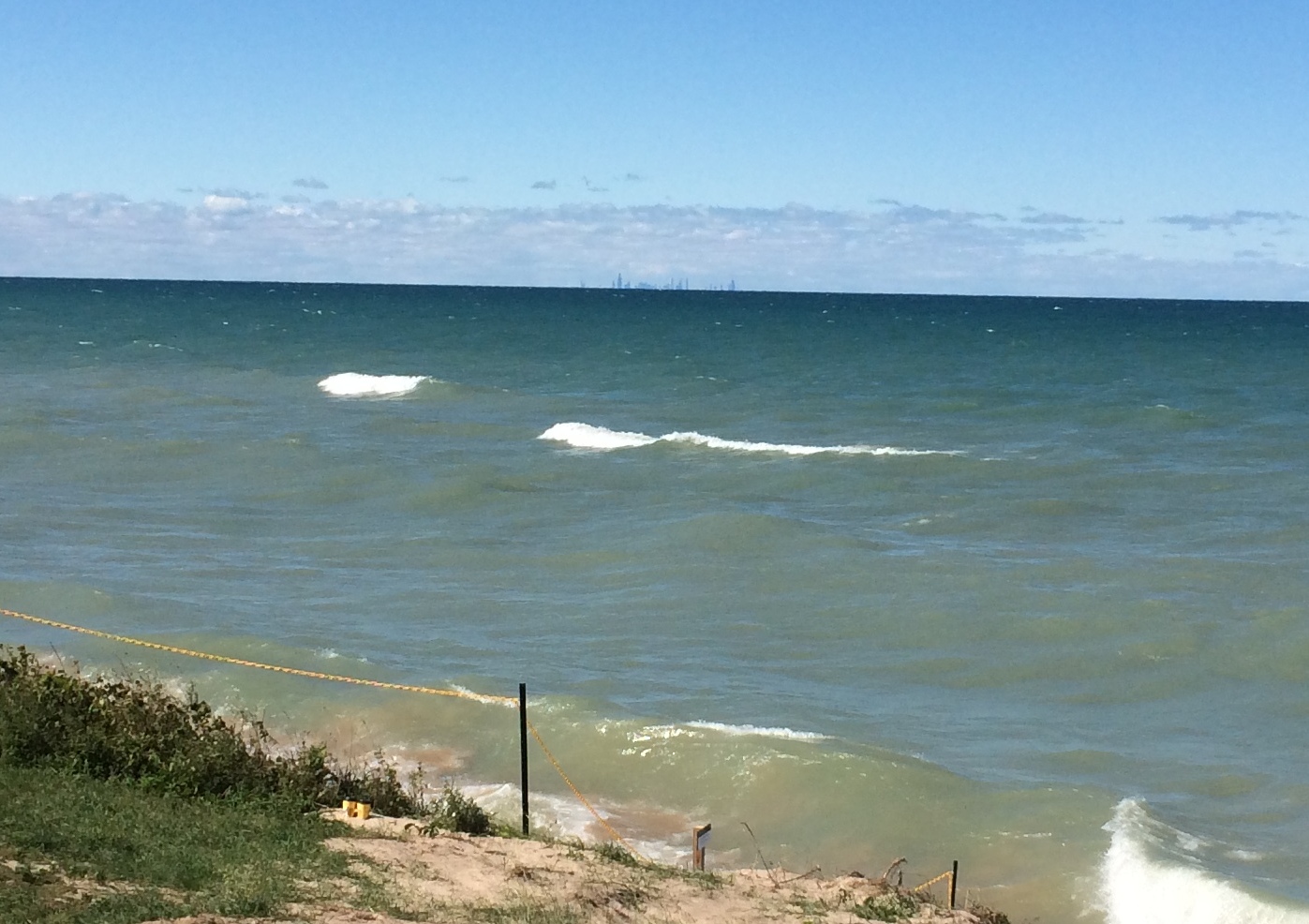 Not far from the houses is access to the beach itself.
Not far from the houses is access to the beach itself.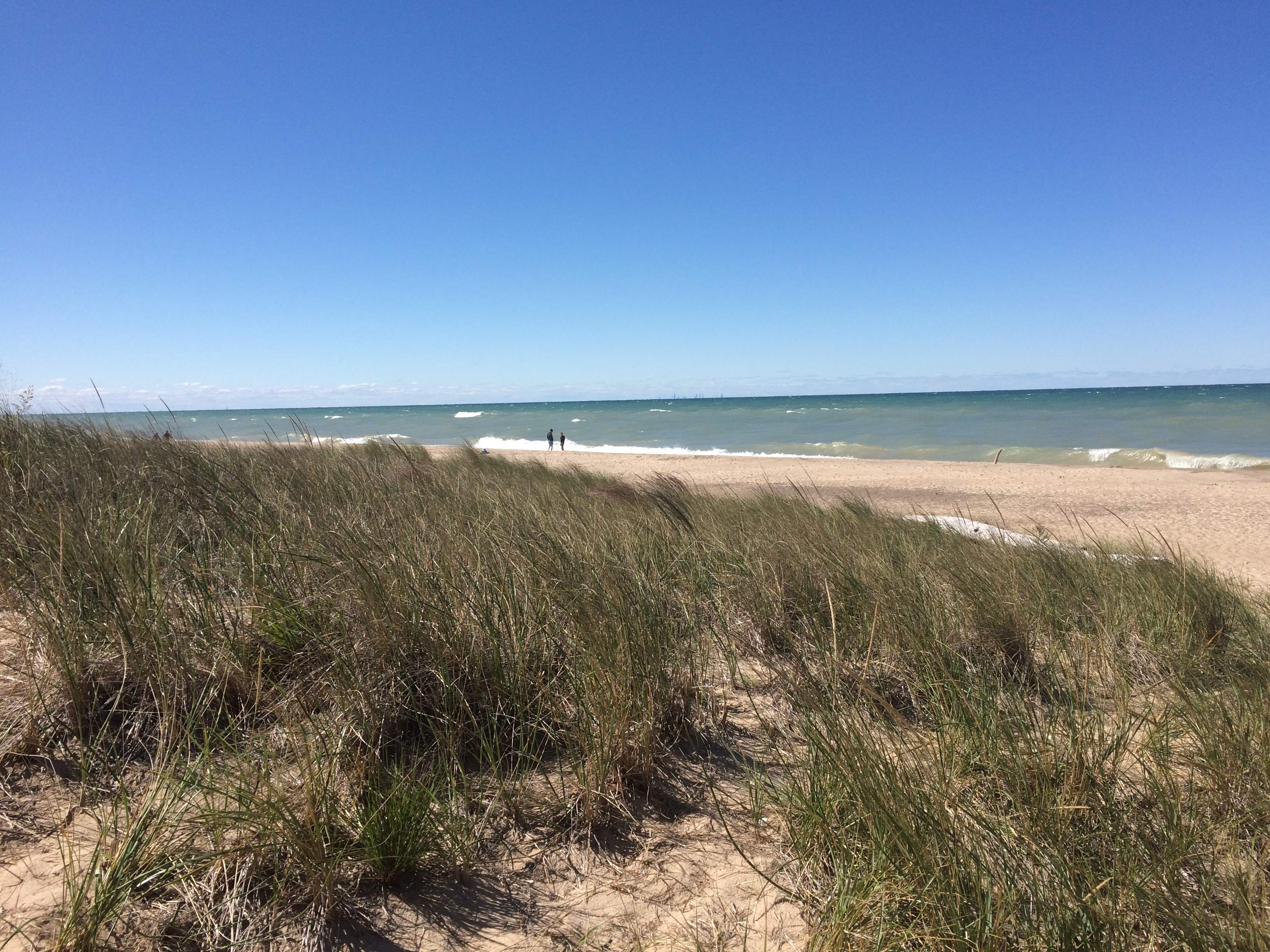
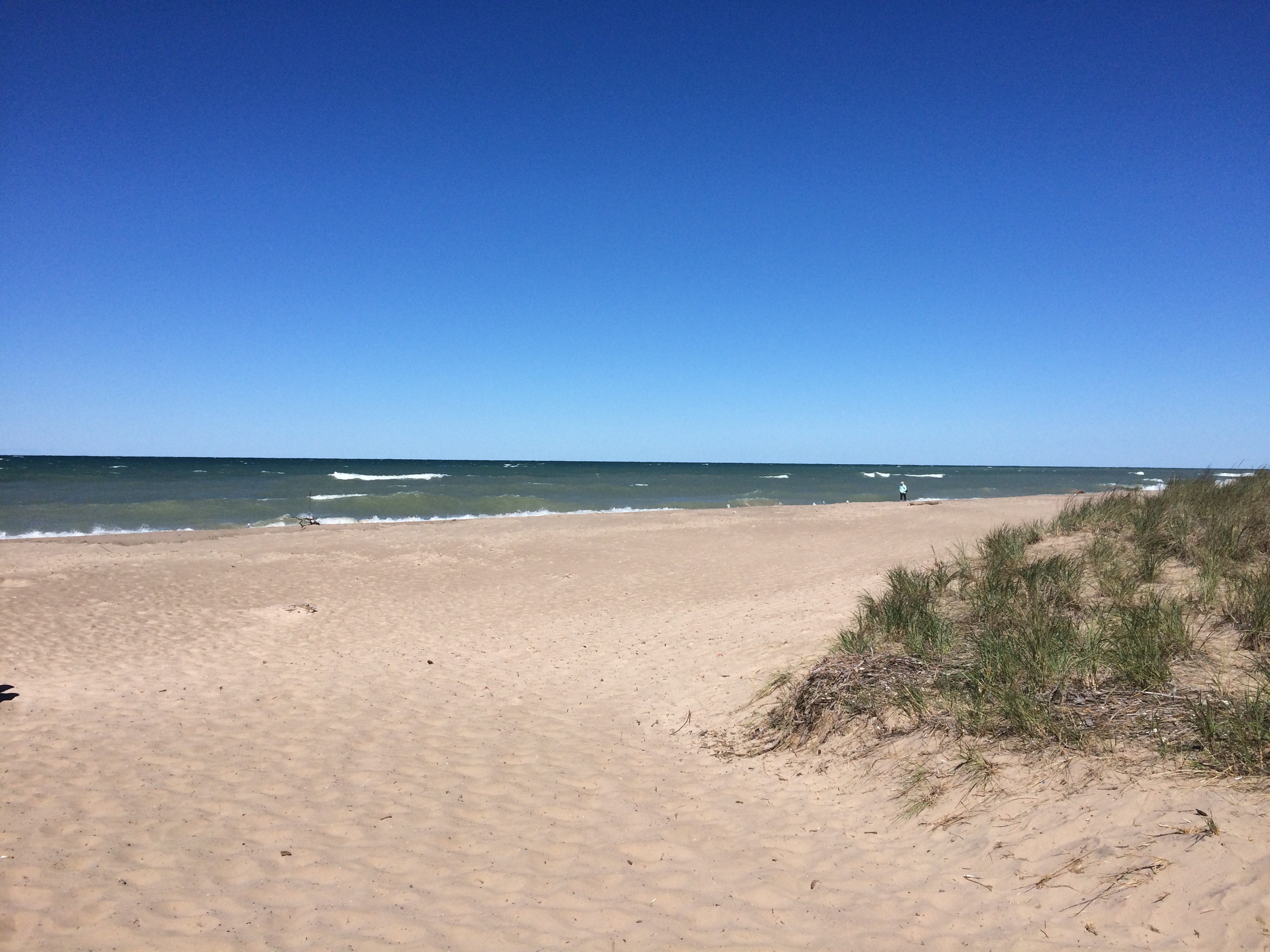 Not many people were out and about, even though it’s part of a national park. Then again, the beach was windswept, bringing in large breakers.
Not many people were out and about, even though it’s part of a national park. Then again, the beach was windswept, bringing in large breakers.
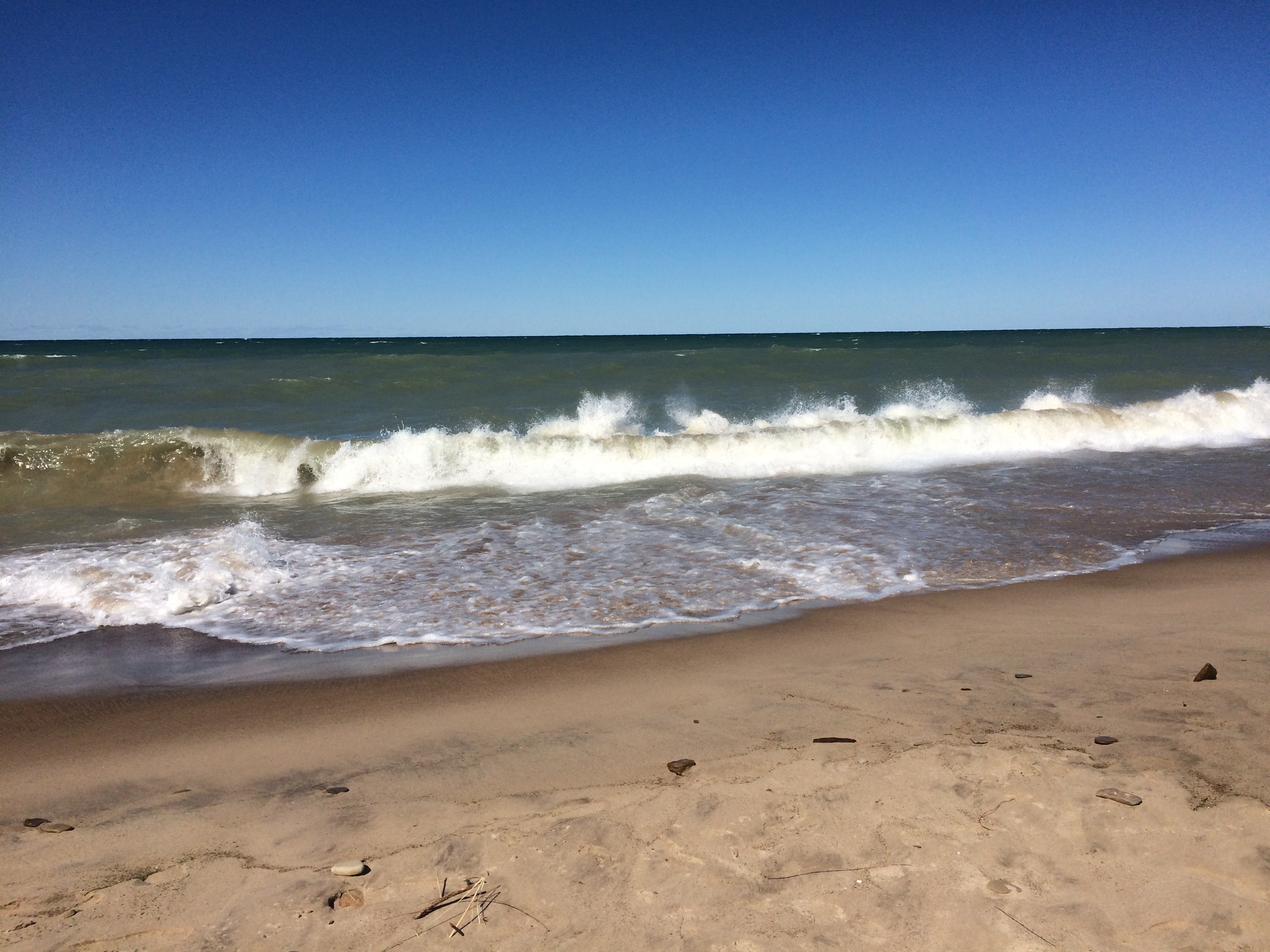 That sounded like this.
That sounded like this.
Perched right over the shore is the pink Florida Tropical House, designed by Miami architect Robert Law Weed to promote Florida living to fairgoers. Come be Florida Men and Women, that is.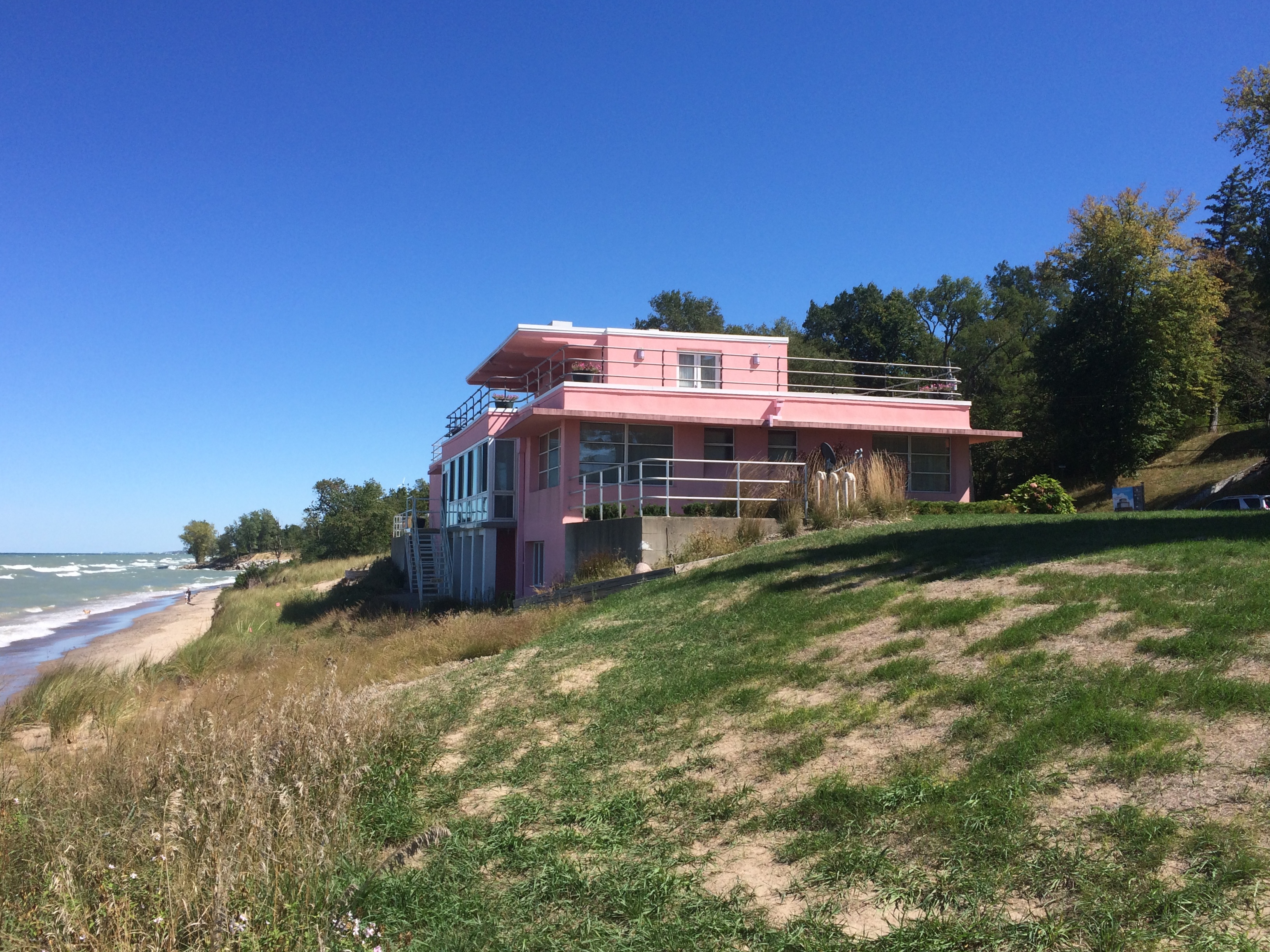
 Also perched over the shore is the Wieboldt-Rostone House, which showcased a building material called Rostone (limestone, shale and alkali). Design by Indiana architect Walter Scholer.
Also perched over the shore is the Wieboldt-Rostone House, which showcased a building material called Rostone (limestone, shale and alkali). Design by Indiana architect Walter Scholer.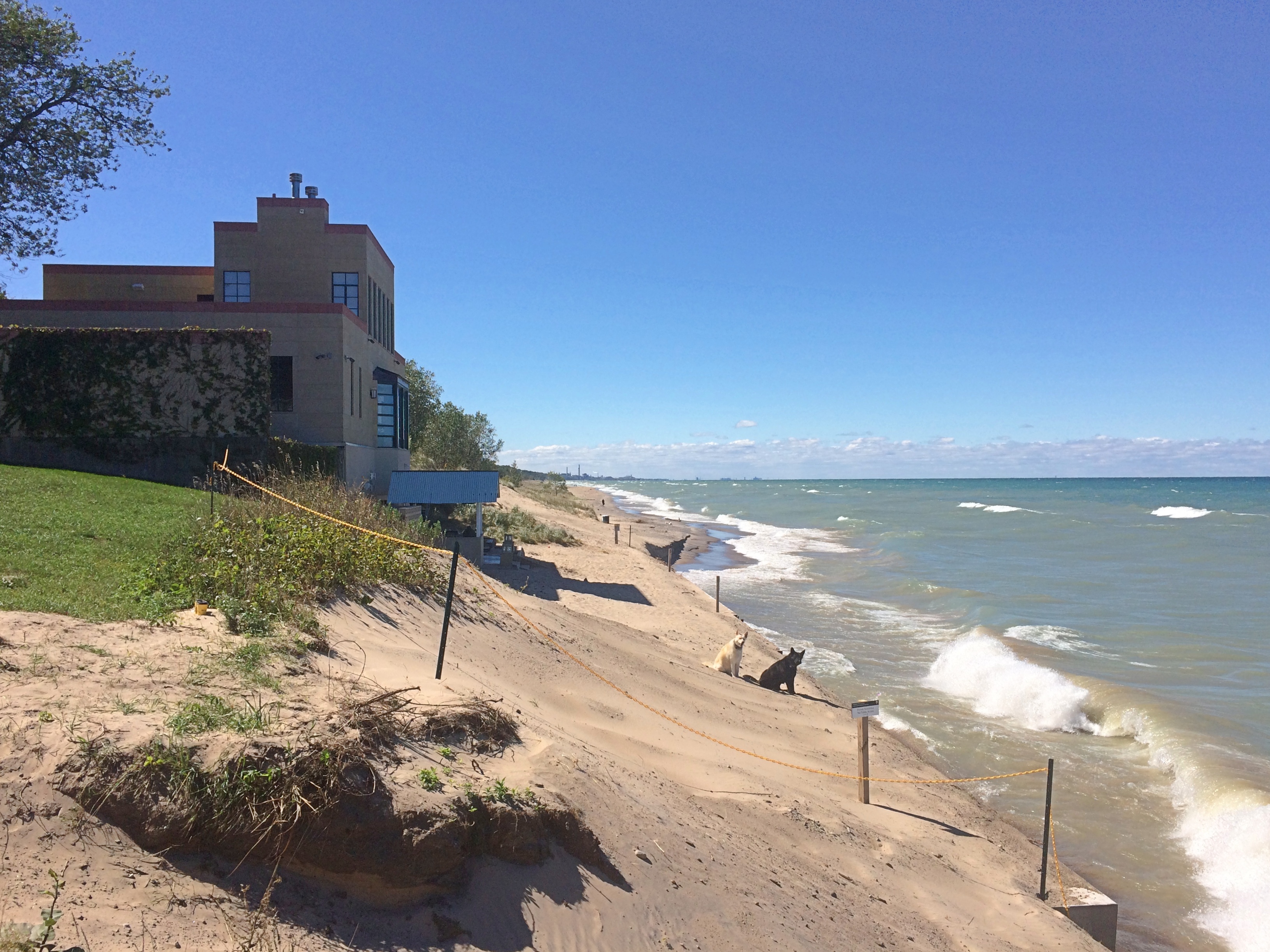
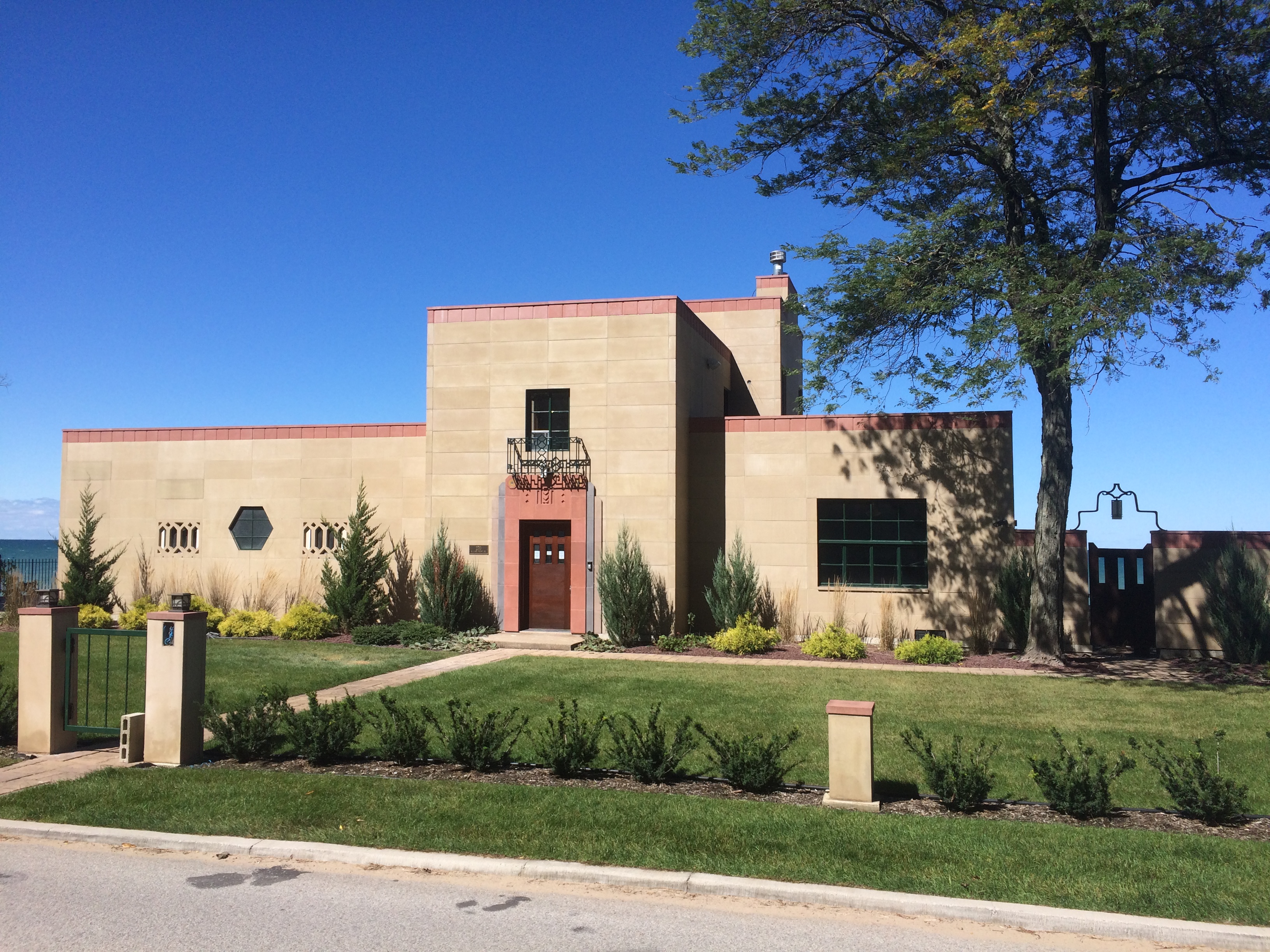 On the hill above the road are the three other houses dating from the world’s fair. One, the Cypress Log Cabin, was meant to showcase that building material, and hugs the ground so closely that it was a little hard to see from the road.
On the hill above the road are the three other houses dating from the world’s fair. One, the Cypress Log Cabin, was meant to showcase that building material, and hugs the ground so closely that it was a little hard to see from the road.
Another hillside structure, the Armco-Ferro House, was “an ode to the virtues of porcelain enamel and steel — expressed in the form of a prefabricated home,” the sign at the bottom of the hill told me.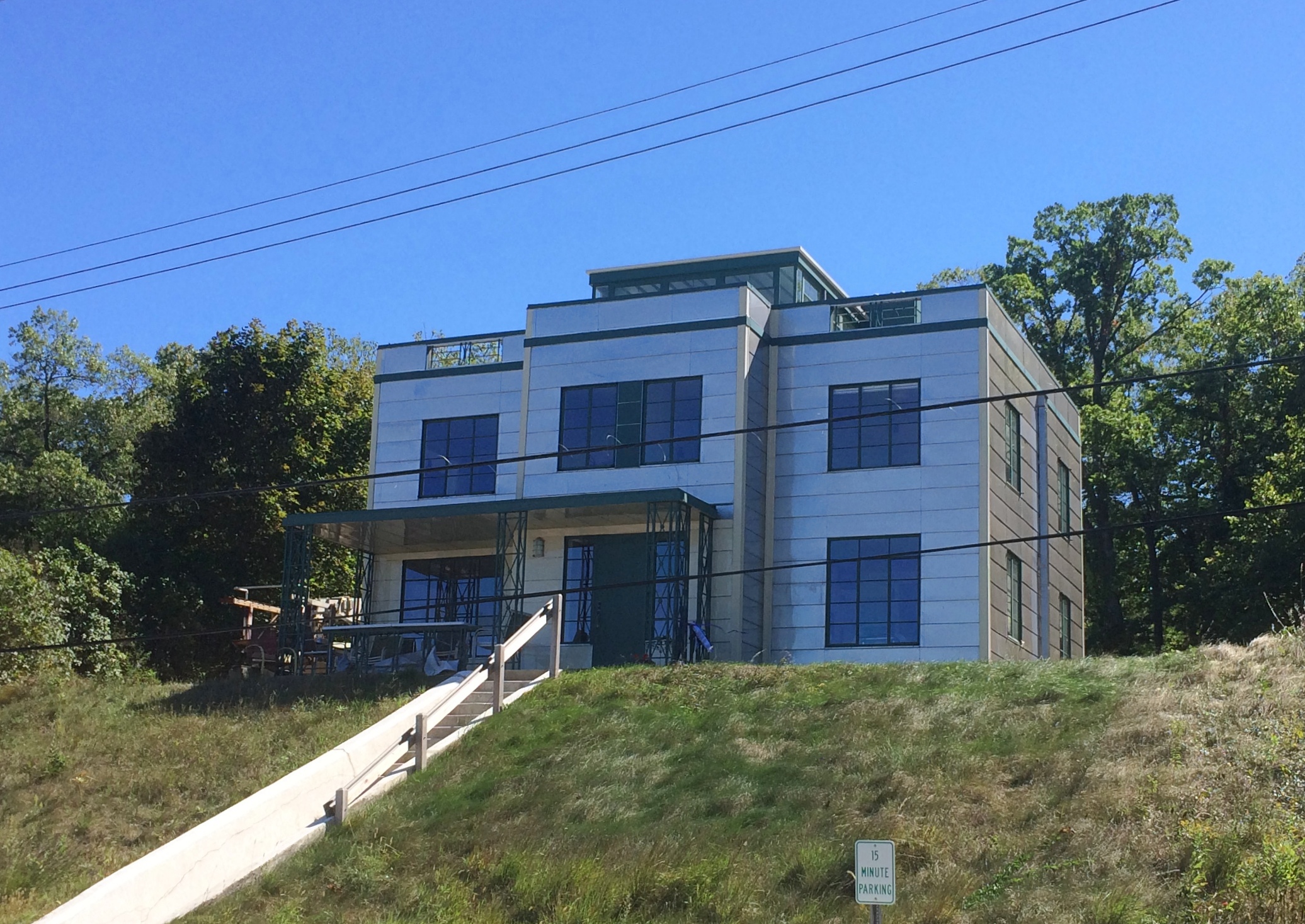 Finally, the House of Tomorrow, which is currently wrapped for renovation. Design by Chicago architect George Frederick Keck.
Finally, the House of Tomorrow, which is currently wrapped for renovation. Design by Chicago architect George Frederick Keck.
 All in all, an interesting little neighborhood. That’s a fitting term, since people actually live in the houses, except for the House of Tomorrow, and someone will live there when the work is done. Signs asked visitors to respect the privacy of the occupants. Tours of the interior are given only once a year, I’ve read, though I expect that isn’t going to happen this year.
All in all, an interesting little neighborhood. That’s a fitting term, since people actually live in the houses, except for the House of Tomorrow, and someone will live there when the work is done. Signs asked visitors to respect the privacy of the occupants. Tours of the interior are given only once a year, I’ve read, though I expect that isn’t going to happen this year.
In a remarkably imaginative move on the part of a government agency — the Park Service, which owns the properties — the houses are leased for 30 years at no charge, provided the lessees agree to restore and maintain the properties in that period.